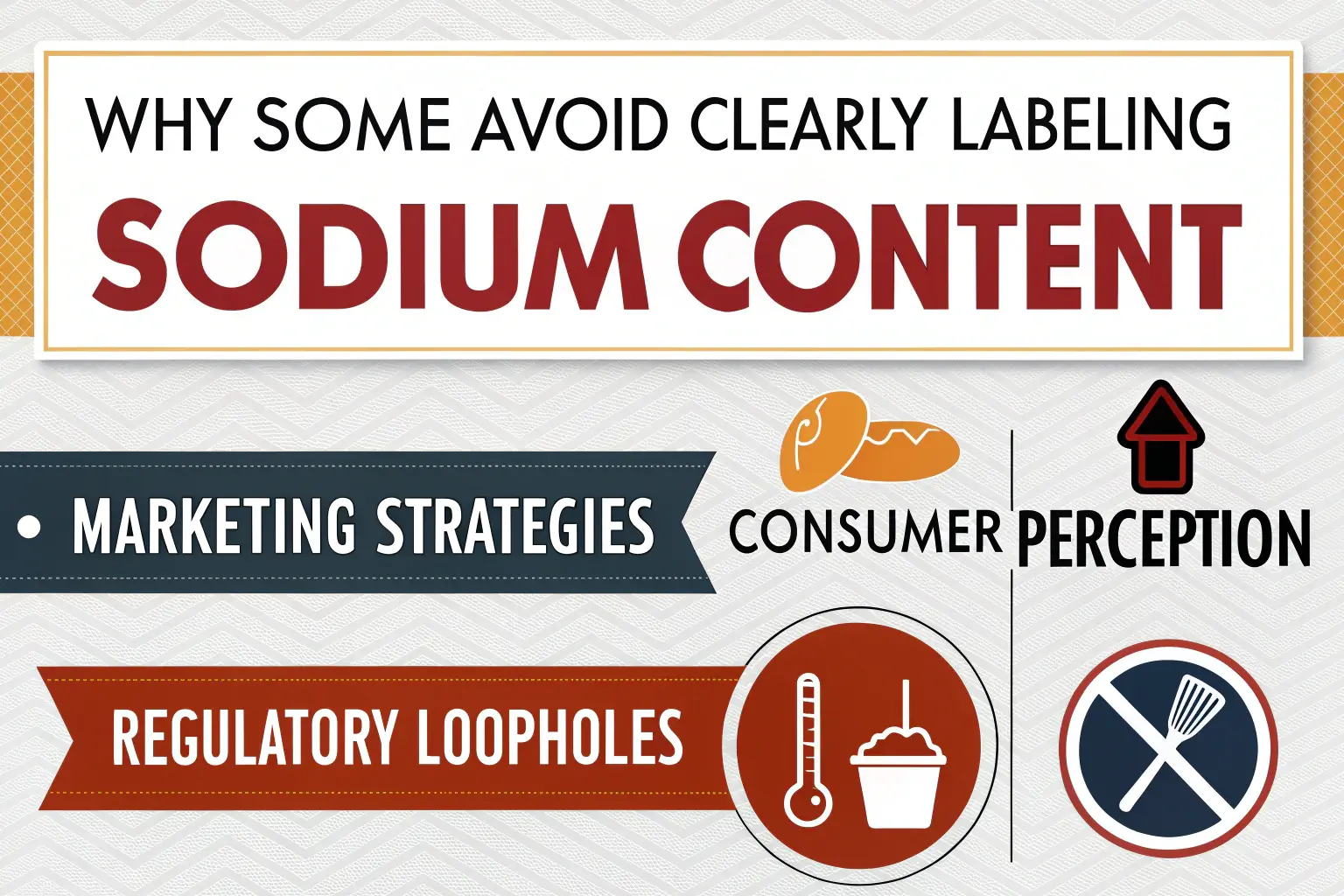Ever pick up a bottle of salad dressing, flip it around, and squint at the nutrition label trying to figure out how salty it actually is? Only to realize it’s missing… something? Like, where’s the sodium info? What are they hiding? You’re not imagining it some brands really do keep things vague when it comes to salt. And yep, it’s super frustrating.
Let’s break down why this happens and what you can do about it.
TABLE OF CONTENTS
Table of Contents
It’s Not Exactly Illegal… But It’s Definitely Shady
Okay, here’s the scoop: the FDA does require sodium to be listed on packaged food labels but only under certain circumstances. If the product is regulated by the FDA (like most foods), it should show the sodium per serving. But some small-batch products or specialty imports may not be tightly monitored, especially if they’re sold locally or through small shops.
Then there’s the food service loophole. If something’s made at a deli, bakery, or salad bar, they don’t always have to post full nutrition info. So while your favorite vinaigrette might taste amazing, you could be getting a salt bomb and not even know it.
Sometimes It’s Just… Marketing Games
Let’s be honest. “High in sodium” isn’t exactly a sexy selling point. So some brands just don’t highlight it. They’ll shout about being organic, vegan, gluten-free, and low-calorie, but when it comes to sodium? Crickets.
Even worse, a brand might slap “light” or “healthy” on the front, but the sodium is sky-high. Sneaky, right?
The fewer people who read the sodium line, the fewer people second-guess buying it. It’s a marketing strategy and unfortunately, it works.
Serving Sizes Are Sometimes a Trap
Ever notice how ridiculously small serving sizes are on some dressings? Like, two tablespoons? Who actually uses just two tablespoons?
Some brands play this game so the sodium number looks low but if you’re using more (and let’s be real, you probably are), you’re getting way more salt than it seems.
It’s like those “100 calorie snack packs” that you eat five of. The math doesn’t lie.
Some Ingredients Sneak In Sodium Under Different Names
Even if a label lists the sodium content, the ingredients list can still be a mystery. Sodium can show up as “monosodium glutamate,” “sodium benzoate,” “disodium phosphate,” or even “natural flavoring.” Sounds innocent, right? But all of those add to the salt load.
Unless you’re a label-reading ninja, you might miss just how much sodium is actually in there.
What You Can Do About It
Here’s the good news: you don’t need to be a nutrition detective to outsmart the confusion. Just a few smart habits can keep your salt intake in check:
- Always read the nutrition facts. Even if the front looks healthy, check that sodium line.
- Watch the serving size. If it says 150mg per serving but you use 3 servings? Boom 450mg.
- Look for “low sodium” or “no salt added.” Legit labels will say it clearly.
- Compare brands. Some dressings are sodium landmines. Others are surprisingly chill.
- Make your own. Homemade dressings = full control and zero mystery.
Bottom Line?
Some brands don’t label sodium clearly because they don’t want you to notice it. It’s not always illegal, but it is kinda sketchy. The more you know, the better choices you can make for your heart, your health, and your taste buds.
So next time you’re in the grocery aisle, turn that bottle around. Peek at the fine print. And maybe just maybe consider whipping up your own dressing instead. Your body (and your blood pressure) will thank you.

